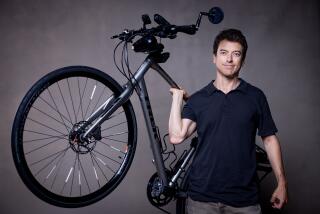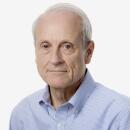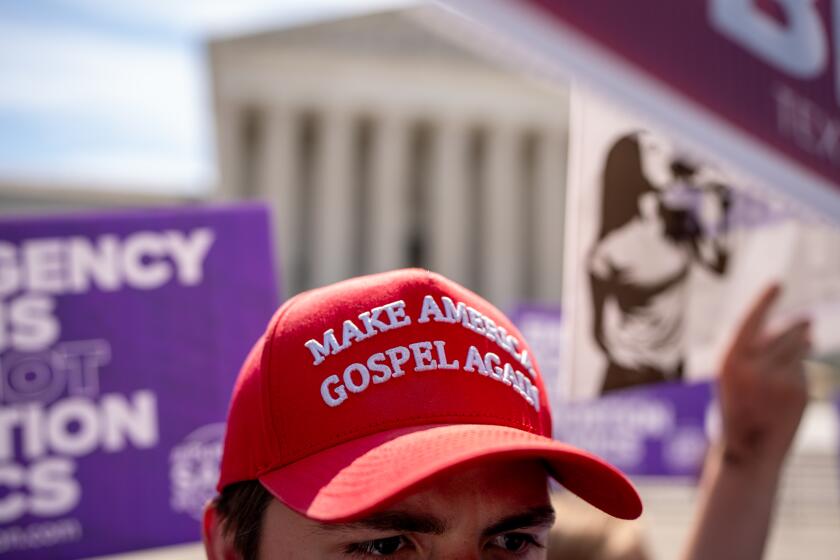Oakland bike summit: What’s next for cycling advocates?
What do 200 or so bicycle advocates from all corners of California do over the course of a four-day summit in Oakland?
Well, they ride, of course. They ride around Lake Merritt (on its new green super-sharrow bike path), into the hills and across a stretch of the new Bay Bridge -- but only part of the way, because much of the bridge doesn’t accommodate cyclists. Yet. They’re working on it.
But they also talk -- about what they have accomplished, what they want to do next and how they want to do it. No doubt most people at the California by Bike summit who took part in the many conversations went home with mental lists of lessons learned, but as one of the few non-cyclists listening in, I have my own set of takeaways. Here are three of them:
FULL COVERAGE: Sharing the road in L.A.
1. It’s just paint. Which is to say, one of the most remarkable and visible achievements of the cycling movement is the fairly quick and relatively inexpensive reallocation of pavement by use of white lines and green swaths.
It’s possible for cities to try things out -- for example, sharrows (those stylized white-painted bike symbols that tell drivers and cyclists alike that bikes have a right to be in the lane) -- and if they don’t work, or if they outlive their usefulness, a city can just paint something else.
The interesting philosophical and practical debate among cyclists will continue: Should bikes be thought of as vehicles that take their place among cars in every lane, or as something distinct that should be protected from motorized traffic by the white stripes or green strips of bike lanes?
We need not wait for the final verdict on that question. Projects to keep car speeds under control and to accommodate bikes can go forward now with a bit of paint and can be redone or undone later as needed.
It won’t always be just paint, though. Some cities -- and in Los Angeles County, Long Beach is setting the pace -- are choosing to protect cyclists with concrete or other barriers and to create dedicated lanes physically separated from cars. It’s a bigger, more permanent investment and a greater commitment.
The payoff is a greater feeling of safety for cyclists, which means more bike riders doing their errands and commuting to work -- which in turn means more people leaving their cars at home, or not getting cars in the first place. Which brings us to the second take-away.
2. This isn’t just a friendly ride. It’s a race -- and Long Beach is in the lead.
Much of the rest of Los Angeles County may still think of its second city as a bedroom community built on war-era industry, but those folks living and working near the far end of the Los Angeles River are on to something. Like other cities, they are in competition for people with talent to offer and money to spend, and the newest generation of folks who fall into that category -- many of them, anyway -- are looking for a car-free lifestyle in urban areas that accommodate their transit needs. And their social needs too, by the way.
Cities must figure out how to hang on to their own young graduates and attract those from other, more competitive cities who are shopping around for the best place to settle, work and spend. Bicycles aren’t the exclusive key to snagging these folks, despite what some at the summit might argue, but they are one key.
Under state law, all California cities now must take steps to turn their motorways into “complete streets,” so bike lanes are largely a given. You’ll see freshly painted stripes in places such as Wasco and Lemoore. There are other cities that are taking things a step or two further, and they aren’t necessarily the ones you’d expect. In the San Gabriel Valley, Temple City is going beyond the paint and making its stretch of Rosemead Boulevard bicycle-friendly with concrete dividers and a separated, dedicated bike lane.
So bike-friendly communities need not be merely the richest or the hippest towns -- places that have already landed a Google outpost or a post-production studio. And that takes us to what is for me lesson No. 3.
3. Bikes may well be an equal-opportunity opportunity.
And that’s a big deal. You don’t see that a lot -- a social or a political movement that serves the underserved while also attracting the privileged. Consider the post-World War II embrace of the automobile. Cars helped separate the haves from the have-nots, leaving those who could afford one able to move to the suburbs but commute to the office downtown on the latest public super-investment, the freeway. People left behind lost their commuter rail and, eventually, their manufacturing centers. Residents without the means to buy a car and with insufficient bus service sometimes found themselves commuting by bike.
But the commutes were more often than not on highway-like streets occupied by huge trucks making harrowing right turns in front of cyclists. Bike lanes, when there were any, were painted in the suburbs for recreational riders, not in central cities for commuting residents.
Cycling activists have taken a leading role in mobilizing residents and pressing politicians for bike lanes and other amenities in areas where bicycles have been an ingrained part of the community for decades. So areas such as South Los Angeles that were once used by drivers as routes between home and office, and a place to hit the drive-through for a cup of coffee on the way to work, may begin to be treated more like the communities that they are.
Or not. Let’s not glorify the bicycle into the great leveler without monitoring how well politicians respond to residents’ demands for at least the street space that other parts of town get. The proposed and, for now, stalled Los Angeles project known as My Figueroa is an important case, testing the power of (among others) car dealers, who are skeptical of bike lanes running past their driveways, versus cycling activists and new urbanists who see Figueroa as an ideal “complete street” remade for cyclists and pedestrians as well as motorists.
And just an observation: After viewing countless slides of separated bike lanes in Amsterdam, New York and, yes, Long Beach, L.A.’s Vermont Avenue south of Slauson, with its parking lanes separated from street traffic by concrete dividers, seems tailor-made for protected bike lanes.
So those are the first lessons as I learned them. They may be the same, or perhaps quite different, from what cyclists got from the conference, perhaps because they already take these things as givens, and perhaps because their experiences on two wheels focus them on different things.
There are more takeaways, and I will deal with them in follow-up posts. They include: Yes, as a matter of fact, cyclists do own the road. And, it’s not about cyclists versus drivers -- except that sometimes it kind of is. And, style counts.
Also, that a non-cyclist sitting among a bunch of bike-riders can feel a bit like a dumpling.
And this: Come on, cyclists, you know it’s true. Riding a bike on city streets is dangerous. It can be deadly. What do we do about that?
ALSO:
Albert Camus -- forever modern
In Tucson, the hypocrisy footprint
In Washington, a crisis in competence
This post is part of an ongoing conversation to explore how the city’s cyclists, drivers and pedestrians share and compete for road space, and to consider policy choices that keep people safe and traffic flowing. For more: latimes.com/roadshare and #roadshareLA.
More to Read
A cure for the common opinion
Get thought-provoking perspectives with our weekly newsletter.
You may occasionally receive promotional content from the Los Angeles Times.











